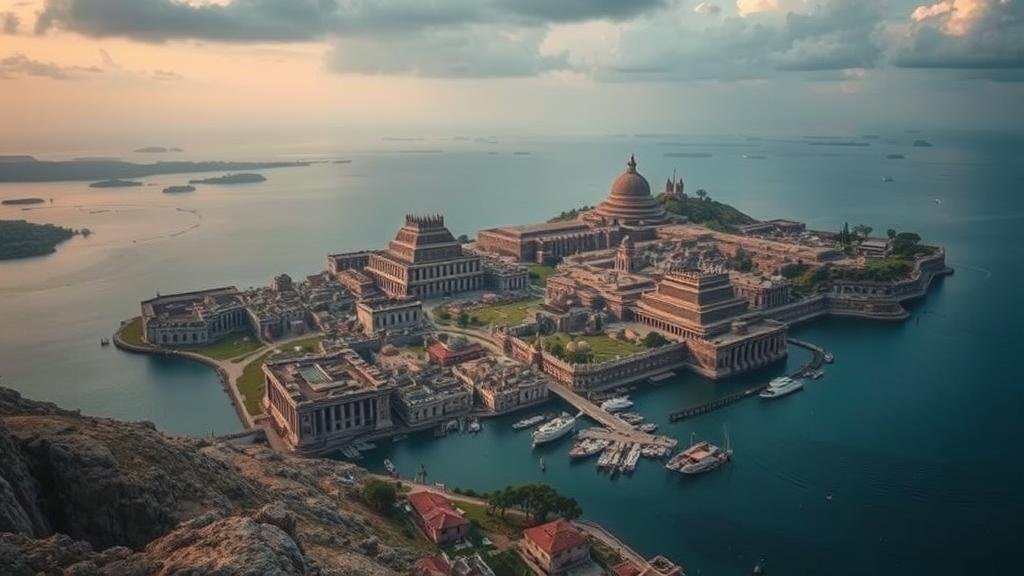Discovering the ancient city of Helike, believed to be the real-life inspiration for Atlantis.
Discovering the Ancient City of Helike
Helike, once a flourishing port city located in Achaea, Greece, has often been referred to as the potential real-life inspiration for the mythical city of Atlantis. This connection arises from various historical texts and recent archaeological discoveries that suggest parallels between the two cities. In this article, we will explore the history of Helike, its archaeological significance, and its intriguing correlation with the legend of Atlantis.
The Historical Context of Helike
Helike was established in the 11th century BC and became an important member of the Achaean League. city was strategically located near the Gulf of Corinth, making it a vital hub for trade and commerce in the ancient world. Its significance peaked in the 6th century BC, when it was known for its wealth and vibrant culture. Helike was also famous for its coinage, which bore impressive designs that reflected its economic prosperity.
The Catastrophic Fate of Helike
In 373 BC, Helike met a catastrophic fate that would echo through history. A massive earthquake struck the region, triggering a violent tsunami that submerged the city beneath the waves. This disaster not only obliterated Helike but also inspired legends of lost cities, including the famed Atlantis described by Plato in his dialogues Timaeus and Critias.
The Atlantis Connection
Plato’s accounts of Atlantis describe a powerful civilization that thrived for several centuries before succumbing to cataclysmic natural events. The parallels between Helike and Atlantis are striking:
- Both cities were prosperous maritime settlements.
- Both faced sudden and devastating natural catastrophes.
- Both appear to have inspired myths surrounding lost and submerged civilizations.
In his writings, Plato mentioned that Atlantis existed beyond the pillars of Hercules (the Strait of Gibraltar), whereas Helike was located nearby in Greece. This proximity supports the theory that Helike could indeed have served as a model for Atlantis, illustrating how ancient cities can weave into the fabric of myth and legend.
Archaeological Discoveries at Helike
Excavations of the Helike site began in the late 20th century, revealing fascinating artifacts and structures that testify to the citys vibrant history. In 2001, a team led by archaeologist Dr. T. S. K. Pavlakis undertook extensive studies of the submerged ruins. discovered:
- Ancient buildings and streets still intact beneath layers of sediment.
- Pottery and coins that date back to the city’s height.
- Evidence of the earthquakes aftermath, including sections of collapsed structures.
These findings not only provide insight into the daily lives of Helikes inhabitants but also validate historical accounts of its sudden destruction.
The Legacy of Helike
The legend of Helike continues to captivate historians, archaeologists, and mythologists alike. It raises questions about the relationship between myth and history, emphasizing how natural disasters can lead to the disappearance of communities and the creation of legends that outlive their original context.
Also, the story of Helike serves as a poignant reminder of the vulnerability of human civilization in the face of natural forces. This reflection is particularly relevant today as we face increasing challenges from climate change and natural disasters globally.
Conclusion: Actionable Takeaways
As we delve into the intriguing tales of lost civilizations, the story of Helike offers both historical significance and a cautionary message. Here are some actionable takeaways:
- Consider visiting archaeological sites or museums that showcase ancient Greece to deepen your understanding of places like Helike.
- Engage with contemporary discussions about climate change and urban planning to address modern parallels with ancient cities.
- Encourage further research on ancient civilizations to uncover more mysteries that shape our understanding of history and mythology.
To wrap up, Helike stands as a point of intersection between history and legend, inviting us to explore the depths of our past and the forces that have shaped human civilization.



